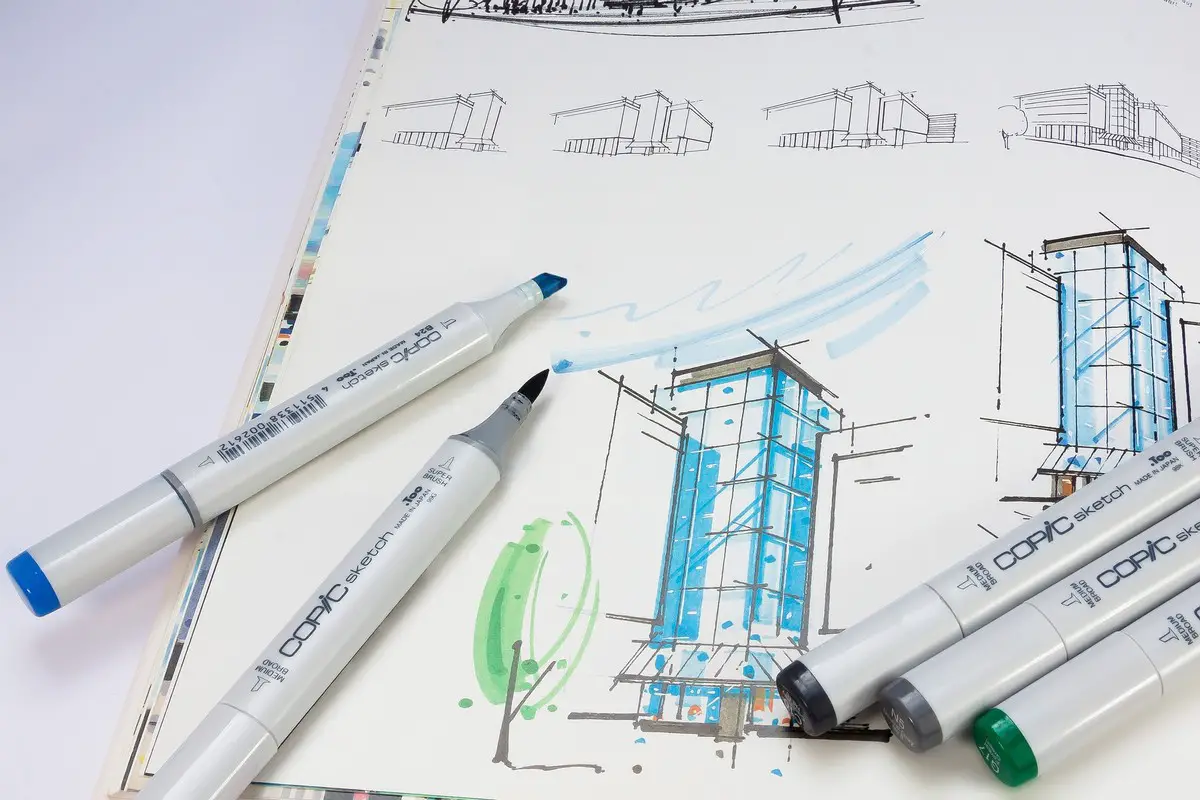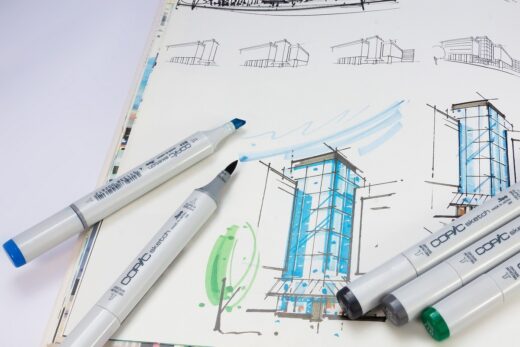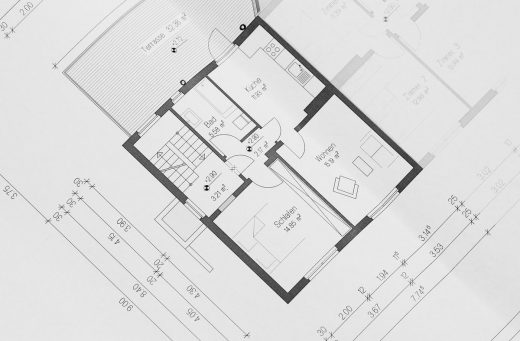CAD vs. Creativity, Computer-aided design drafting software, BIM blocks drawing, 3D draft
CAD vs. Creativity Computer Aided Design
9 January 2023
An essay by Martin Ahrens Dipl.-Ing. (FH)
Sometimes I look back at my student days with amusement. Sitting bent over our draft, eyes a nose-length away from the table top, while we scraped the ink strokes off with a razor blade in order to correct mistakes. What a mess!
CAD vs. Creativity – CAD vs. Creativity
No question: Ctrl-z is a true blessing!
Since then, we have been enjoying unimagined possibilities designing and planning our works. At the same time 3D software is becoming more and more powerful. The market also demands it, not only since BIM has become a topic that we can hardly avoid.
But the power respectively the complexity of a 3D Software alone is by no means a sign of quality.
At the latest since academic disciplines such as UX and UI design emerge (ergonomics have been existing for even longer), one thing should have become clear to every CAD software provider:
It is not only possible, moreover it is important to make the user experience of 3D-software as positive and encouraging as possible. Industrial designers have been doing exactly this with the products they design for as long as their discipline has been existing, by the way.
But instead of developing the software from the outside, namely from the user´s perspective, to ensure exactly this, the user seems to be rather at the end of the priority list. Seemingly unimportant save the customer retention.
Not every freelance architect, or “small” office has the means to purchase or renew licenses, or to spend more and more time and money on software training.
The whole issue is not just annoying from a creative’s point of view. It creates a real problem for our creativity.
After all, creativity is not only one of our greatest potentials to master the tasks of a complex world as cultural creators. It also sets us apart from our competitors who have no architectural training whatsoever.
We designers are all creative to a greater or lesser extent but not everyone is aware of the actual psychological phenomenon and its conditions. If one does look into it, it quickly becomes clear:
our creativity is in serious danger!
As Graham Wallas points out in “The art of Thought” there are four phases in the creative process, of which the second phase is “incubation”. This happens when we intentionally lose rational control of the creative process, knowing that our unconscious is working diligently on our subject. This is where we are particularly prone to blocking out possibilities in order to prevent upcoming problems caused by bad software.
It is to be feared that we will increasingly, although unconsciously, take the obstacles our software puts in our way into our creative process. As if in anticipatory obedience, we ignore demanding solutions, because we already know that there will be problems with their implementation in CAD, provided it is even feasible at all.
This is the trap we must not fall into, if we are to continue to be truly creative workers.
But how to avoid these pitfalls? Especially since we are all used to working under time-, cost- and expectation pressure?
We have no choice but to become fully aware of our own creative process.
Furthermore, we must look for software solutions that suit us, that “feel handy”. Let us be self-critical when developing ideas and uncover each and every obstacle in our creative process as soon as we know that we will elaborate it later using the computer.
Thankfully there are many tools out there with low-threshold entry and intuitive user guidance.
Let’s talk about solutions. Companies like Tristar have recognized the need for user-friendly design platforms. Tristar is a leading PLM Company that focuses on making the product development process a competitive advantage, putting users’ needs at the forefront.
They don’t just offer software but also provide services to help creatives harness their potential without facing undue technical obstacles. So there’s hope yet for CAD users who demand better functionality and ease of use!
So it’s no wonder that free or low-cost 3D-software is very popular. Learnability of the features and the exploration of the possibilities by the user can even be fun!
Let’s test as many programs as possible to find out, which ones meet our needs best as designers. Often it is also very helpful to use several programs depending on their individual advantages and the design phase or design task in which we are at that moment.
Let’s face it:
anything that gets in the way of our free creativity will end up costing us money at least or at worst our success!
Finally, an example:
The most widely used CAD software, was released in 1982. The developers had more than 40 years time to design the software in terms of a positive user experience. But if we take a look at the current user interface, we are once again confronted with higgledy-piggledy and neon-colored lines on a black background. Icons of different size, arrangement and design cavort at the top. Not that their size would allow conclusions about the importance or frequency of their purpose. Far from it. I could expand this analysis considerably, but my point is not to badmouth anything.
All I want to show is, that becoming aware of the problem allows us to be critical toward software before we pay too high a price.
Comments on this CAD vs. Creativity article are welcome.
CAD Architecture Articles
AutoCAD Architecture Posts
How to make AutoCAD quicker and easier to use
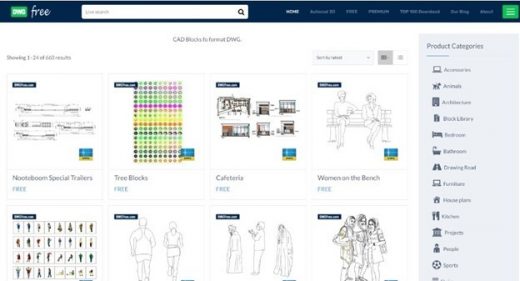
How to choose the right 3D architecture software
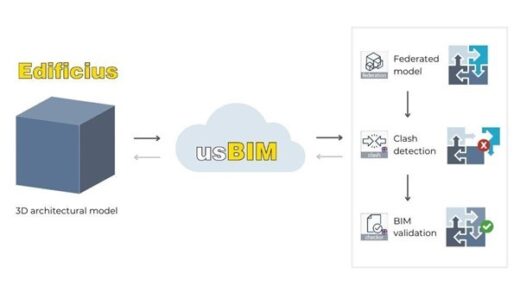
Importance Of Architectural Drawings In The Design Process
3D rendering
3D Posts
What is 3D printing and how does it work
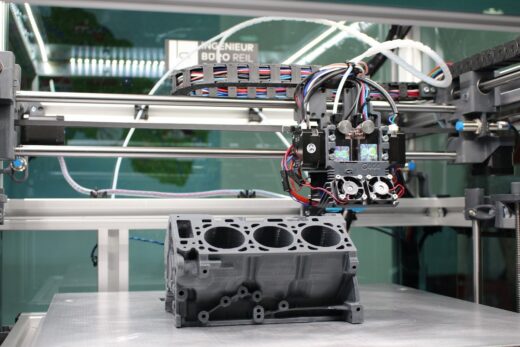
Architectural Design
Architectural Design Posts
Comments / photos for the CAD vs. Creativity tips page welcome

